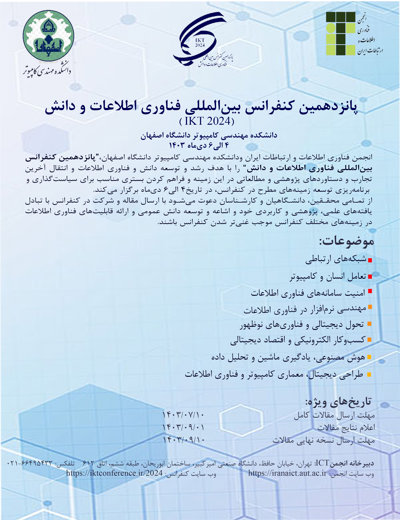0% Complete
Authors :
Keywords :
Abstract :
List of archived papers
مینا علیانژاد - نسترن زنجانی - زهرا عسکری نژاد امیری
Alireza M. Hosseini - Dr Abbas Mohammadi
Mehran Safari Dehnavi - Vahid Safari Dehnavi - Masoud Shafiee
فاطمه صبائی - دکتر احمد عبداله زاده بارفروش
رسول سامانی - فهیمه شاهرخ شهرکی - دکتر ناصر قدیری رسول سامانی - فهیمه شاهرخ شهرکی - ناصر قدیری -
Tanisha Patel - Nilesh Kumar Jadav - Tejal Rathod - Sudeep Tanwar - Deepak Garg - Hossein Shahinzadeh
احسان سلیمانی دهکردی - محمدرضا ملاخلیلی میبدی
سعید مرادی - جمشید باقرزاده محاسفی
Dr Monireh عبدوس - Taha Vajed Samei
مهدیس صفری - احمد عبدالله زاده بارفروش




